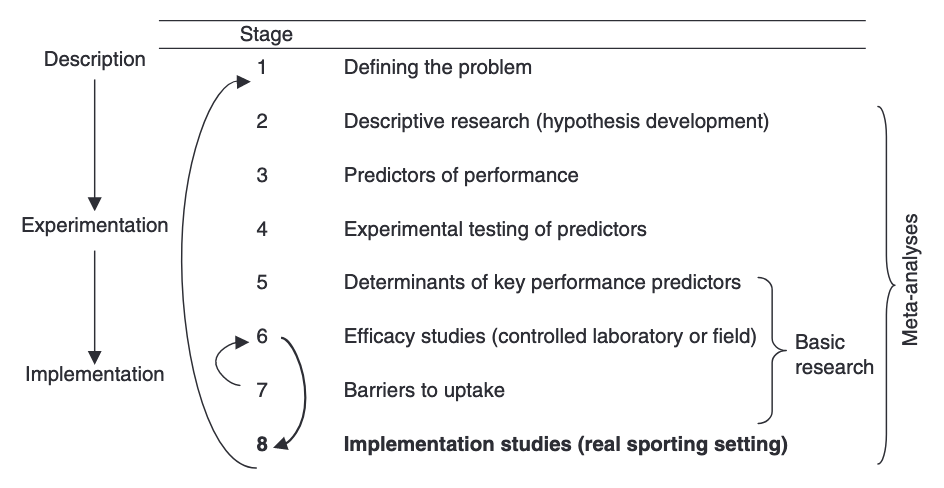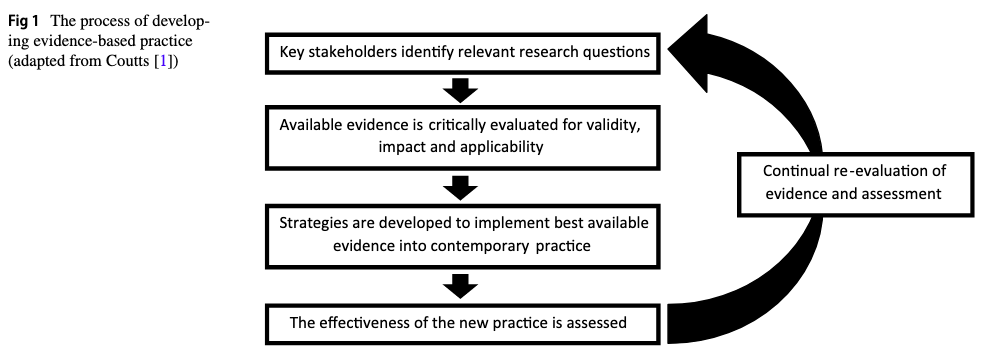The Role of Applied Sport Science and Interdisciplinary Collaboration in Multidisciplinary Performance Teams
TL;DR
The increasingly professionalised landscape of elite sport necessitates sophisticated and integrated support systems to optimise human sporting performance. This article examines the pivotal role of applied sport science within modern multidisciplinary performance teams (MDTs), exploring its definition, evolving domains, and the critical shift from traditional multidisciplinary to more integrated interdisciplinary and transdisciplinary approaches. It delves into the structure and function of MDTs, emphasising the paramount importance of effective communication, shared goals, and team cohesion among diverse specialists. A specific focus is given to the integral role of the sport psychologist and their seamless integration within these collaborative environments. Furthermore, the paper identifies common challenges to effective collaboration within MDTs and proposes practical strategies for their mitigation. Finally, it explores the significance of data visualisation and knowledge translation in supporting coaches and athletes, and introduces the concept of the T-shaped practitioner as an ideal profile for modern sport environments, concluding with actionable recommendations for fostering athlete-centred support through enhanced interdisciplinary collaboration.
1. Introduction
The landscape of professional and elite sport has undergone a profound transformation in recent decades, evolving from largely amateur pursuits into a multi-billion-dollar industry (Smith and Smolianov 2016; French and Torres Ronda 2021; McLellan et al. 2022; Zheng and Mason 2022; Williams et al. 2023). This evolution has created an escalating demand for sophisticated support structures aimed at understanding and enhancing human sporting performance (Bishop 2008; Brocherie and Beard 2020; Gleason et al. 2023b, 2023a, 2024). Central to this demand is the emergent field of sport science, which applies scientific principles and rigorous methodologies to various aspects of athletic endeavour, training, and competition (Bishop 2008; Fullagar et al. 2019; Brocherie and Beard 2020). Despite the acknowledged potential of scientific innovations to improve practice, a persistent challenge remains in effectively translating research findings into routine application within the dynamic, fast-paced environments of elite sport (Bishop 2008; Fullagar et al. 2019; Brocherie and Beard 2020; Bartlett and Drust 2021). This often protracted process, estimated to take one to two decades for original medical research to be integrated into routine practice, is influenced by numerous complex factors, including conservative coaching practices and the dissemination of findings in highly specialised academic journals that may not always align with practitioners’ and coaches’ immediate needs (Bishop 2008; Fullagar et al. 2019).
The purpose of this article is to comprehensively explore the pivotal role of applied sport science and the necessity of interdisciplinary collaboration within contemporary multidisciplinary performance teams (MDTs). By drawing on theoretical insights and applied examples, this paper aims to define key concepts, analyse the structures fostering integrated support, discuss critical interpersonal dynamics, and propose practical recommendations for enhancing athlete-centred support. This exploration is vital for bridging the persistent gap between scientific knowledge generation and its effective implementation in real-world sporting contexts (Bishop 2008; Fullagar et al. 2019; Brocherie and Beard 2020; Bartlett and Drust 2021).
2. Defining Applied Sport Science and its Domains
Sport science is fundamentally defined as a multi-disciplinary field concerned with the understanding and enhancement of human sporting performance (Bishop 2008; Gleason et al. 2023b). It operates as a scientific process guiding sport practice, with the ultimate aim of improving performance (Bishop 2008). Distinct from exercise science, which largely investigates human physiological responses to various stressors, sport science specifically seeks to induce adaptations in human functional capacity to maximise performance in sporting competition (Fullagar et al. 2019; Brocherie and Beard 2020; French and Torres Ronda 2021; Gleason et al. 2024). This involves converting data into valuable information that supports decision-making and influences performance outcomes (Figure 1).

Figure 1: An applied research model for the sport sciences adapted from (Bishop 2008).
Traditionally, sport science has been rooted in several core disciplines, encompassing physiology, biochemistry, biomechanics, nutrition, and skill acquisition (French and Torres Ronda 2021; Woods et al. 2021; Gleason et al. 2023b). Sport physiology focuses on the biological underpinnings of performance, including environmental effects, fluid balance, body composition, and recovery mechanisms, often quantifying training loads to understand performance trends and fatigue (Brocherie and Beard 2020; Gleason et al. 2023b). Sport biomechanics applies the physics of human movement to optimise performance and reduce injury risk, utilising tools such as force plates and 3D movement sensors to analyse technical details of movement (Brocherie and Beard 2020; Gleason et al. 2023b). Skill acquisition specialists draw from motor learning and psychology to understand perceptual and decision-making qualities in demanding tasks, aiding athletes in developing anticipation strategies and optimising coaching methods (Bishop 2008; Fullagar et al. 2019; Brocherie and Beard 2020; Gleason et al. 2023b; Otte et al. 2024). Sport nutritionists ensure athletes consume appropriate quantities and qualities of calories to support physical development, daily activity needs, and recovery (Burke and Rawson 2021; Winkelman and Norman 2021; Gleason et al. 2023b).
Emerging domains within applied sport science reflect the increasing complexity of modern sport and the proliferation of data and technology (Gamble et al. 2020; French and Torres Ronda 2021; Cullinane et al. 2024). Data science and analytics are now crucial, with sport scientists managing vast amounts of data, conducting sophisticated analyses, and visualising results to inform decisions (French and Torres Ronda 2021; Gleason et al. 2023b, 2023a). This also extends to monitoring training load and injury trends, a critical task often managed by sport physiologists or sport scientists, to evaluate training methodologies, anticipate fatigue, and prevent injuries (French and Torres Ronda 2021; Gleason et al. 2023b, 2023a). Furthermore, sport science plays a significant role in talent identification and development (Collins and MacNamara 2019; Gleason et al. 2023b, 2023a). The field continuously evolves to encompass aspects such as problem-solving, process evaluation, and the rigorous application of scientific methods to real-world performance challenges (Bartlett and Drust 2021; French and Torres Ronda 2021; Winkelman and Norman 2021; Woods et al. 2021; Gleason et al. 2023b).
3. Structure and Function of Multidisciplinary Performance Teams (MDTs)
The transition from a generalist approach to a more specialised support model has led to the widespread adoption of MDTs in professional and elite sport (Smith and Smolianov 2016; French and Torres Ronda 2021; Winkelman and Norman 2021; Gleason et al. 2023b, 2023a, 2024). These teams, often referred to as “Human Performance Teams”, are designed to provide comprehensive support to athletes and coaches, moving towards a holistic approach to athlete development and performance (Smith and Smolianov 2016; French and Torres Ronda 2021; Winkelman and Norman 2021; Woods et al. 2021; Walker et al. 2022).
A typical MDT structure is orchestrated by a Performance Director or Head of Performance (Smith and Smolianov 2016; Winkelman and Norman 2021; Walker et al. 2022). This managing position is responsible for organising and supervising all sports science and sports medicine servicing areas, ensuring that efforts are coordinated towards a common performance goal (Smith and Smolianov 2016; Brocherie and Beard 2020). The team commonly comprises a diverse array of specialists, including full-time sport scientists (e.g., physiologists, biomechanists, nutritionists, psychologists, data scientists/statisticians), and a medical department covering care and therapy (e.g., physicians, physiotherapists, athletic trainers) (Smith and Smolianov 2016; Brocherie and Beard 2020; French and Torres Ronda 2021; Winkelman and Norman 2021; Gleason et al. 2023b). Some organisations may also include external academic consultants, such as neuroscientists (Smith and Smolianov 2016; Brocherie and Beard 2020; Winkelman and Norman 2021).
The primary function of an MDT is to optimise athlete development, availability, and ultimately, performance (Winkelman and Norman 2021; Gleason et al. 2023b). This is achieved through systematic processes such as managing training loads, conducting athlete monitoring and assessment, designing interventions, analysing data, and providing evidence-based insights (Figure 2) to coaches and athletes (Fullagar et al. 2019; French and Torres Ronda 2021; Winkelman and Norman 2021; Gleason et al. 2023b, 2023a). The aim is to move beyond subjective, anecdotal approaches to training and performance by integrating scientific principles and empirical rigour (Bishop 2008; Fullagar et al. 2019; Gleason et al. 2023b, 2023a). This structured collaboration ensures that the myriad influences on sport performance are addressed comprehensively, from physical capacities and psychological readiness to injury prevention and rehabilitation (Rothwell et al. 2020; Walker et al. 2022; Gleason et al. 2023b, 2023a, 2024).

Figure 2: The process of developing evidence-based practice adapted from (Fullagar et al. 2019).
4. Multidisciplinary vs. Interdisciplinary Approaches: Benefits of Integration
Within the context of sports performance, the terms multidisciplinary, interdisciplinary, and transdisciplinary delineate varying levels of collaboration among specialists (Rothwell et al. 2020; Bartlett and Drust 2021; Woods et al. 2021; Stewart et al. 2024). Understanding these distinctions is crucial for optimising performance support systems.











Responses